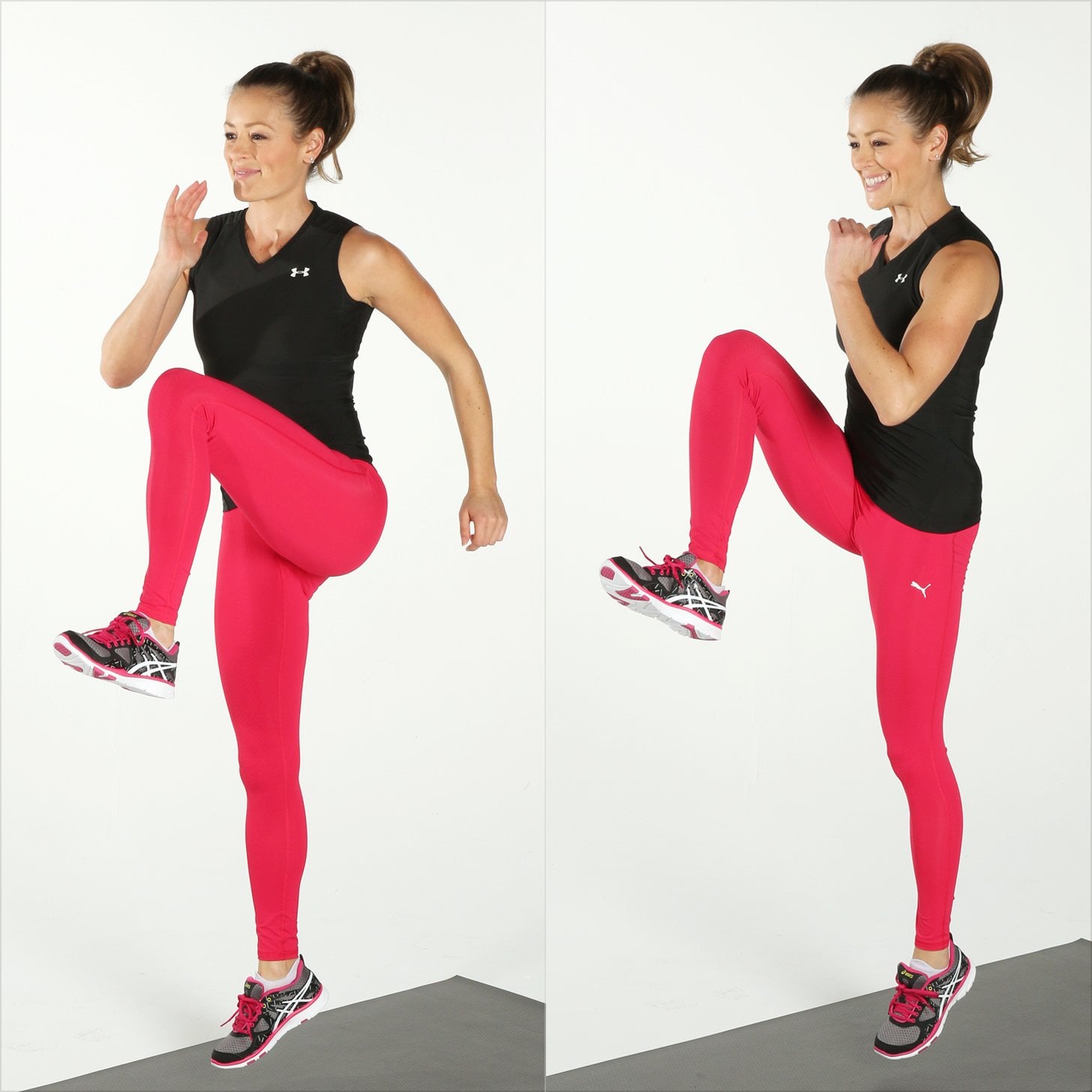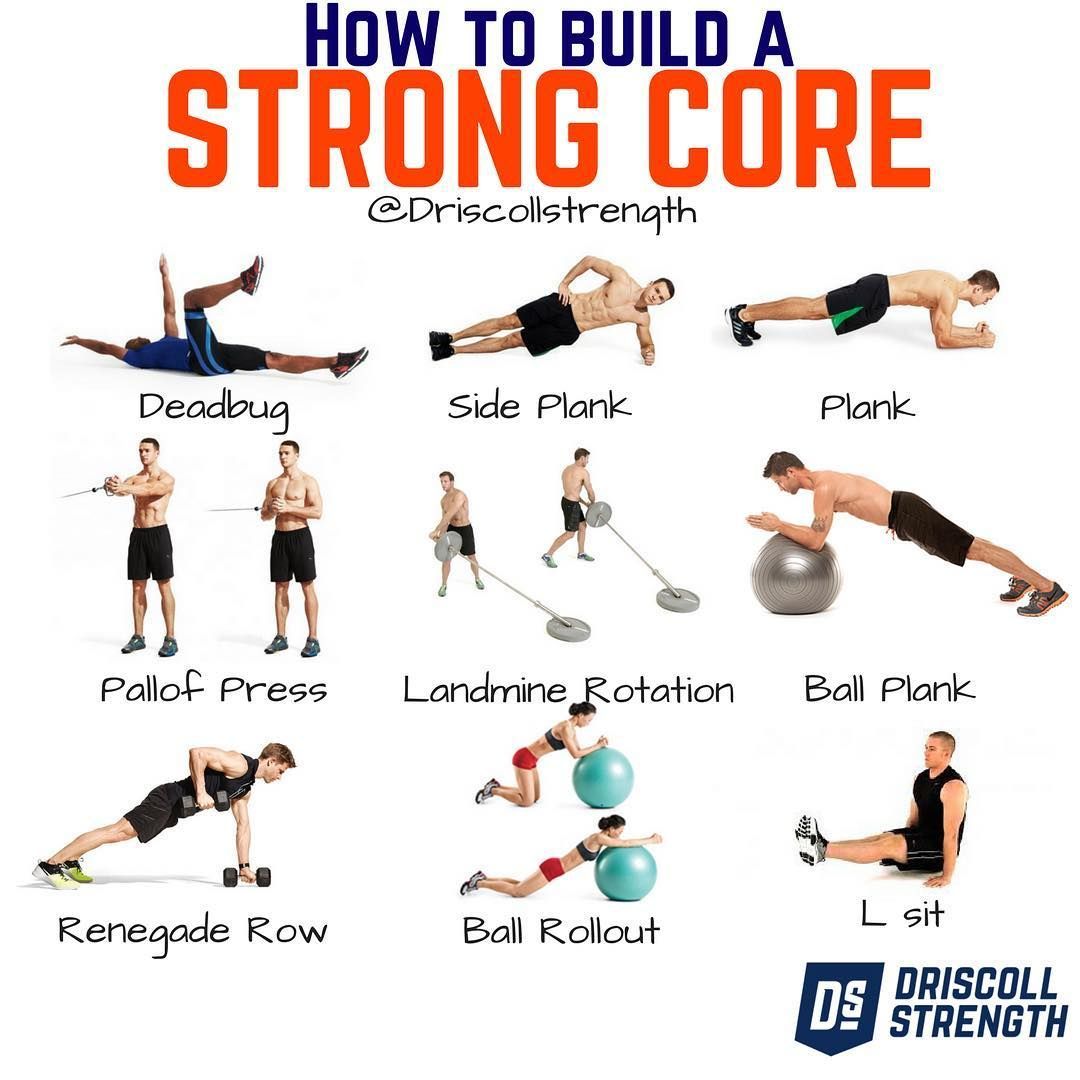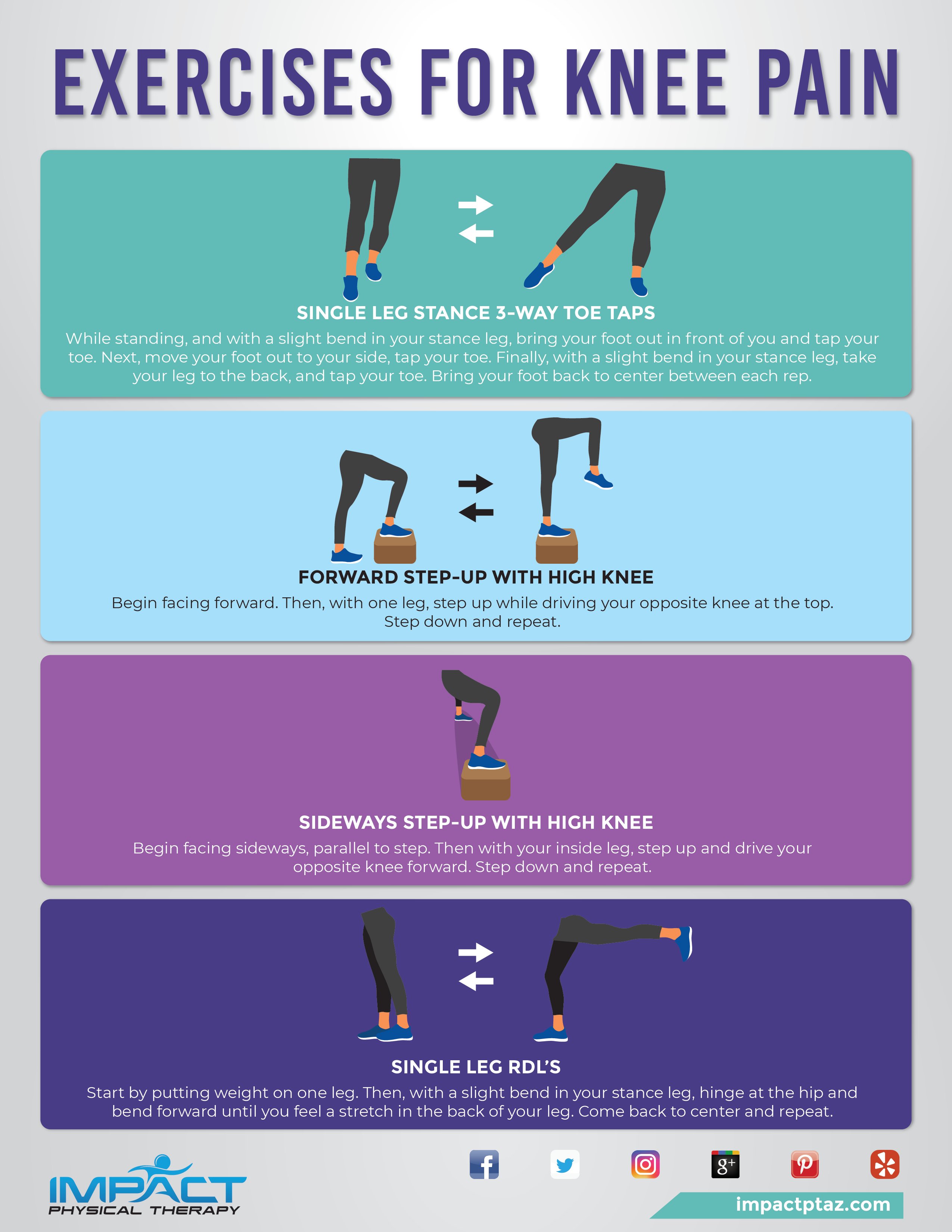Welcome to the world of high knees! If you're looking to add a fun and effective cardio workout to your routine, you've come to the right place. High knees are not only a great way to get your heart pumping, but they also serve as an excellent exercise for strengthening your core. In this guide, we’ll explore the basics of high knees and why they should be a staple in your fitness regimen.
Benefits of High Knees for Core Strength

So, why should you incorporate high knees into your workout routine? Let's dive into the benefits!
- Engages the Core: High knees are a dynamic exercise that requires a lot of stabilization. As you lift your knees toward your chest, you activate your entire core, including your rectus abdominis, obliques, and lower back muscles. This engagement leads to improved strength and stability.
- Improves Cardiovascular Fitness: Not only do high knees strengthen your core, but they also provide a fantastic cardiovascular workout. Elevating your heart rate helps improve your overall fitness level and endurance.
- Enhances Coordination: Performing high knees requires you to coordinate your movements, which can enhance your overall agility and coordination over time. This is especially useful for athletes or anyone looking to improve their functional movement patterns.
- Burns Calories: High knees are a high-intensity exercise that can help you torch calories quickly. If you're looking to lose weight or maintain a healthy weight, adding high knees to your routine can be a game-changer.
- Boosts Athletic Performance: Because of their explosive nature, high knees can help improve your speed and power, which are critical components for many sports and physical activities.
Overall, high knees are not just a simple exercise; they are a powerful tool for building a strong core while also enhancing your cardiovascular fitness. You'll be surprised by how quickly you can see and feel the results. So, are you ready to give them a try?
Also Read This: How Coca-Cola Is Produced – A Dailymotion Documentary Overview
3. How to Perform High Knees Correctly

Alright, let’s get down to business! Performing high knees isn’t just about bouncing around; it’s an art that, when done correctly, can seriously boost your core strength and overall conditioning. Here’s a step-by-step guide to help you nail it:
- Start Position: Stand tall with your feet hip-width apart. Keep your chest up and engage your core. This will help maintain good posture throughout the exercise.
- Get Moving: As you start, lift your knees one at a time toward your chest. Your goal is to bring each knee up to at least hip level. You want a strong drive, so think about “pulling” your knees up rather than just letting them rise.
- Use Your Arms: Swing your arms in coordination with your legs. For every knee that comes up, your opposite arm should pump forward. This helps maintain balance and increases the intensity of your workout.
- Land Softly: As you bring your knee back down, make sure to land softly on the balls of your feet. This will help protect your joints and keep you light on your feet.
- Maintain a Quick Pace: The key to high knees is speed. Try to keep a quick rhythm, ideally aiming for 120 to 150 beats per minute if you’re timing yourself with music.
- Focus on Breathing: Remember to breathe normally! Inhale through your nose and exhale through your mouth. This will keep your energy levels up and prevent fatigue.
Try to perform high knees for about 30 seconds to start, and gradually increase the duration as you get more comfortable. Incorporating high knees into your routine two to three times a week can lead to fantastic results in your core strength and overall fitness.
Also Read This: How to Use an Ice Cream Maker to Make Delicious Homemade Ice Cream with Ease
4. Common Mistakes to Avoid When Doing High Knees

Even though high knees might seem straightforward, there are several common pitfalls that can undermine your technique and effectiveness. Let’s break down what to watch out for:
- Not Lifting Your Knees High Enough: One of the biggest mistakes is failing to lift your knees to hip level. If your knees aren’t rising high enough, you’re not engaging your core effectively. Aim for a strong, controlled lift.
- Rounding Your Back: Keep that spine straight! Rounding your back can lead to poor form and potential injury. Maintain an upright posture, keeping your shoulders back and your chest open.
- Overstriding: If you step out too far rather than driving your knees upward, the exercise becomes less effective. Keep the movement vertical rather than horizontal, which helps target your core better.
- Inconsistent Arm Movement: Arm coordination is crucial. Swinging your arms helps you maintain balance and generates momentum. Neglecting this can lead to an uneven exercise and increased risk of injury.
- Holding Your Breath: Just like any workout, breath control is vital. Holding your breath won't just hinder your performance; it can also make you feel fatigued way too quickly.
- Going Too Fast: Speed is essential but watch out for sacrificing form for pace. If you find yourself getting sloppy with technique, slow it down. Master your form first!
Avoiding these common mistakes will not only enhance your workout effectiveness but also keep you safe from injury. Remember, it’s not about how fast you go; it’s about doing it right!
Also Read This: Proven Methods to Earn Money on Dailymotion Without Any Investments
5. Variations of High Knees for All Fitness Levels
High knees are a fantastic exercise, but they're not one-size-fits-all! The great news is that you can mix things up with various variations to cater to different fitness levels and goals. Whether you're a beginner or a seasoned athlete, there's something here for everyone!
1. Basic High Knees:
This is the classic version. Stand with your feet hip-width apart, engage your core, and start jogging in place while driving your knees up towards your chest. Aim for a quick pace! This version is excellent for beginners to build core strength and improve coordination.
2. High Knees with a Twist:
Add some upper body movement to your high knees! As you bring your knee up, twist your torso toward that knee. This variation significantly engages your obliques, making it a great way to challenge your core.
3. High Knees with Arm Swings:
Incorporate your arms! As you bring your knees up, pump your arms in conjunction. This not only helps with balance but also increases your heart rate, adding a cardio component to your workout.
4. Plyometric High Knees:
If you're feeling more advanced, try incorporating a hop. Instead of just jogging in place, jump from foot to foot, bringing your knees up higher. This explosive movement will definitely crank up the intensity, so be cautious if you're new to this!
5. High Knees with Resistance Bands:
To create an extra challenge for your core, attach a resistance band around your ankles. This makes lifting your knees more challenging, engaging your hip flexors and core muscles even more. Just make sure to maintain proper form!
With these variations, you can always find the right level of challenge for yourself. Remember to listen to your body and progress at your own pace. Enjoy mixing and matching to keep things fresh and fun!
Also Read This: How to Make an Apple Swan Video: Dailymotion’s Creative Tutorial
6. Incorporating High Knees into Your Workout Routine
Now that you understand the different variations of high knees, let’s talk about how to seamlessly incorporate them into your workout routine. Whether you do strength training, cardio, or a mix of both, high knees can be a versatile addition to your regime.
Option 1: Warm-Up
Start your workout with a dynamic warm-up. High knees are perfect for elevating your heart rate and getting your body ready for exercise. Spend about 30 seconds doing high knees at a moderate pace, followed by some light stretching to your major muscle groups.
Option 2: Circuit Training
If you love circuit training, include high knees in your routine! You can create a circuit that includes different exercises like push-ups, lunges, squats, and high knees. For example:
- 30 seconds of push-ups
- 30 seconds of squats
- 30 seconds of high knees
- Rest for 30 seconds, then repeat!
This keeps your heart rate up and helps build strength at the same time.
Option 3: High-Intensity Interval Training (HIIT)
High knees work exceptionally well in a HIIT format. Alternate between high-intensity intervals of high knees for 20-30 seconds and low-intensity recovery periods. For example:
- 20 seconds of high knees
- 10 seconds of rest
- Repeat for 4-6 rounds!
Option 4: During Cardio Sessions
If you’re going for a jog or doing steady-state cardio, throw in some high knees every few minutes to keep things interesting. A quick set of high knees can help break the monotony and elevate your heart rate.
Incorporating high knees doesn’t just add variety; it also helps improve your cardiovascular fitness, strengthens your core, and burns more calories. So, give those knees a lift and enjoy the benefits they bring to your workout routine!
Also Read This: Is Dailymotion Popular? Analyzing Its User Base and Reach
7. Where to Find High Knees Exercise Videos on Dailymotion
So, you’re ready to conquer the high knees exercise! Fantastic! The next step is to find the right videos that can guide you through the movements, help you with form, and keep you motivated. Dailymotion is a great platform for this! Here’s how you can efficiently find high knees exercise videos:
First, head over to Dailymotion and type “High Knees Exercise” into the search bar. You'll be presented with an array of options, featuring workout tutorials, fitness classes, and motivational routines. Here are some tips to help you find the best content:
- Filter by Duration: If you're short on time, look for shorter videos (around 5-10 minutes). On the other hand, if you want an in-depth guide, search for longer videos (15-30 minutes) that dive into proper form and technique.
- Check the Ratings: Pay attention to the ratings and comments. Videos with high ratings are often more reliable, and audience feedback can provide insight into the effectiveness of the workout.
- Follow Fitness Channels: Look for established fitness coaches or channels known for their engaging workout content. Channels with certified trainers usually offer better guidance and safety tips.
- Explore Playlists: Some content creators compile playlists dedicated to specific workouts or fitness challenges. This could be a fantastic way to learn various exercises, including high knees, while enjoying a structured workout.
Another excellent approach is to follow specific hashtags or keywords. Try searching for hashtags like #HighKnees, #CardioWorkout, or #CoreStrength. This can help you discover a wide range of videos that may not appear in the general search results.
And don't forget—while watching the videos, mimic the movements carefully. Follow along with the music or cues, and don't hesitate to pause or rewind if you need to get the hang of a particular technique. The key is to enjoy yourself while honing your skills.
8. Conclusion and Encouragement to Begin Your Fitness Journey
Congratulations! You've taken a big step towards understanding the high knees exercise and its importance for building a strong core. As you embark on your fitness journey, remember that every little bit counts. Each time you practice high knees or any exercise for that matter, you are investing in your health and well-being.
Your fitness journey is uniquely yours—embrace it! Here are a few encouraging thoughts to keep in mind:
- Start at Your Own Pace: Everyone begins somewhere. Whether you're a complete beginner or getting back into fitness, take it one step (or knee lift!) at a time.
- Stay Consistent: Making fitness a part of your routine is vital. Even dedicating 10 minutes a day to high knees can make a difference over time.
- Celebrate Small Wins: Did you manage to do 10 more reps than last week? Celebrate it! Each achievement, no matter how small, is a victory.
- Seek Community Support: Whether it's online forums, workout groups, or friends, surround yourself with positive vibes. Sharing your goals and progress can keep you motivated and inspired.
Remember, fitness is not just about going hard all the time; it's about making sustainable lifestyle choices. With the high knees exercise in your toolkit, you're already on the right track to improving your cardiovascular fitness, strengthening your core, and having fun along the way.
So, lace up those shoes, hit play on a motivating video, and let the high knees begin! You've got this!
 admin
admin








